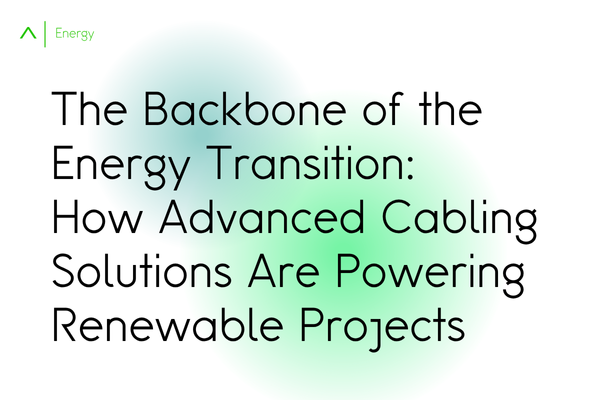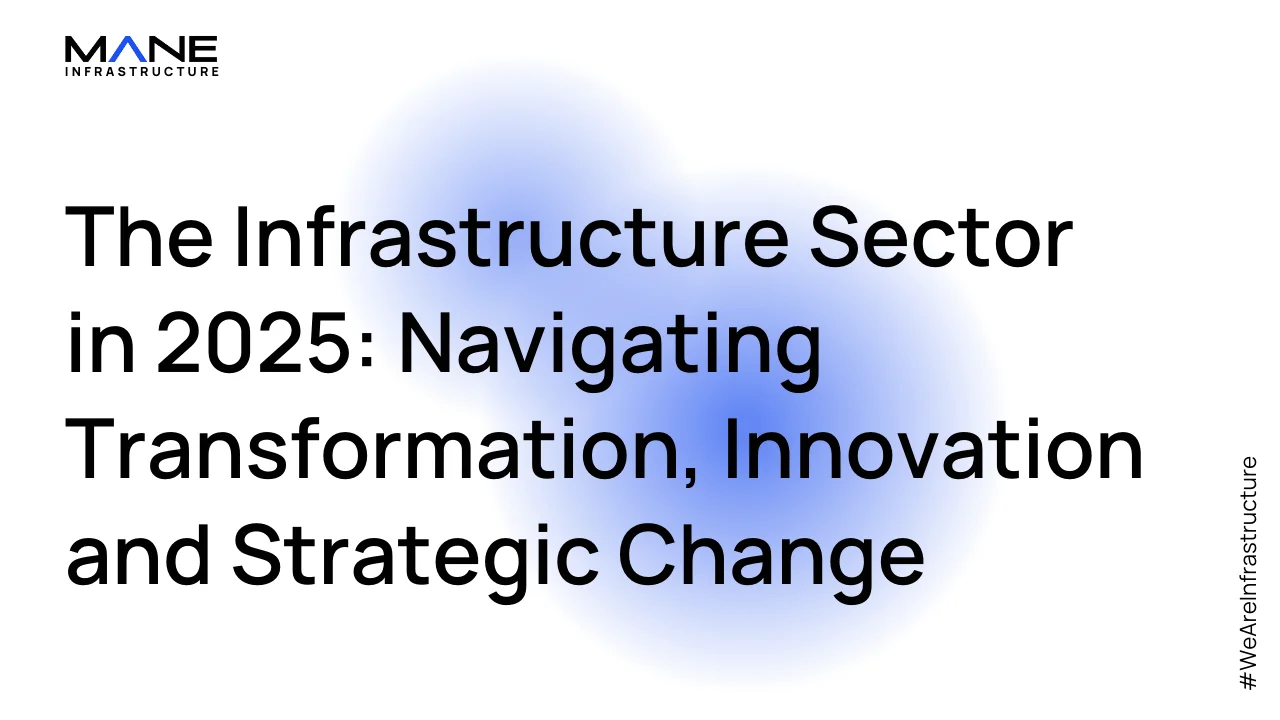The Backbone of the Energy Transition: How Advanced Cabling Solutions Are Powering Renewable Projects
02 May, 20252 minsThe recent power outage across Spain and Portugal in April 2025 underscored a critical truth...

The recent power outage across Spain and Portugal in April 2025 underscored a critical truth about our energy future: reliable, resilient electricity grids are not just desirable - they're essential. As we witness the accelerating transition to renewable energy sources, one element remains consistently overlooked yet fundamentally crucial to success: the cables that connect everything together.
The Invisible Heroes of Our Energy Revolution
When we envision renewable energy, our minds naturally gravitate toward wind turbines and solar panels. Yet these impressive technologies would be rendered useless without the critical infrastructure that transmits their power to where it's needed. Cables are the invisible lifelines of the energy transition, ensuring that electricity from renewable sources reaches consumers safely and efficiently.
Modern cabling solutions do far more than simply connect point A to point B. They help minimise energy losses, ensure safe transmission of electricity, and secure the long-term reliability of our increasingly complex energy systems. As Christopher Kay, Operations Manager at Custom Designed Cables, notes, "Cables are essentially the 'arteries' of the modern electricity grid. Without them, electricity could not be distributed to homes and businesses efficiently to meet our everyday needs."
Grid Resilience: The Iberian Wake-Up Call
The widespread blackout that affected Spain and Portugal in April 2025 demonstrated the critical importance of grid resilience in powering modern nations. While investigations continue into the exact cause, the event highlighted how vulnerable interconnected power systems can be without proper investment in infrastructure.
Grid resilience means creating a power system that can withstand and recover from disruptions while delivering electrical power continuously and reliably. This requires combating power outages and equipment failure, withstanding harsh weather conditions, and resisting cyber-attacks - all while continuing to power homes, hospitals, and vital infrastructure.
The transition to renewable energy adds new layers of complexity to this challenge. As we move from centralised fossil fuel generation to distributed renewable sources, our grid infrastructure must evolve to accommodate:
- Bi-directional power flows from homes and businesses generating their own electricity
- Variable generation patterns from wind and solar installations
- New high-demand connections for electric vehicle charging networks and electrified industry
- Long-distance transmission from remote renewable generation sites to urban demand centres
Modern Cabling Technology: Enabling the Transition
The cables supporting this transition are marvels of modern engineering. High-quality cables excel in three key areas:
- Safety: Premium cables reduce risks of electrical failures through proper insulation and robust construction - critical for high-performance renewable installations.
- Efficiency: Advanced cables transmit electricity with minimal losses, significantly enhancing the cost-effectiveness of renewable energy systems while reducing environmental impact.
- Durability: Quality cables offer lifespans measured in decades rather than years. For renewable energy projects with long operational timelines, this durability is essential for financial viability.
In offshore wind farms, for example, cables must withstand extreme mechanical stress from wave movements and turbine vibrations, while resisting seawater corrosion. Meanwhile, solar farm cables face intense UV exposure and temperature fluctuations. Each environment demands specialised cabling solutions designed with these unique challenges in mind.
Innovation at the Forefront
The cable industry continues to innovate to meet the growing demands of renewable energy:
- Monitoring Systems Integration: Modern cables increasingly incorporate real-time monitoring capabilities that can detect faults, overloads, or wear early and provide alerts before failures occur - critical for large wind or solar farms where pinpointing problems can be challenging.
- Advanced Materials: New insulation materials and improved conductivity help extend cable lifespans while reducing energy losses during transmission.
- High Voltage Direct Current (HVDC): These cable systems are revolutionising long-distance power transmission, reducing losses over hundreds of kilometres and making remote renewable generation economically viable.
As one real-world case study demonstrates, an offshore wind farm implementing cables with UV and saltwater-resistant insulation featuring built-in monitoring sensors saw dramatically lower maintenance costs and extended operational lifespans.
The Transmission Challenge
The scale of the challenge ahead is immense. According to the Energy Transitions Commission, the size of global electricity grids must grow by more than 50% by 2050 to meet net-zero trajectories. This means expanding from around 68 million km of grid infrastructure today to 110-200 million km by mid-century.
This expansion faces significant hurdles. In many developed countries, grid growth has stagnated in recent decades due to stable or declining electricity demand. The UK's National Grid estimates that five times as much transmission capacity will need to be built in the next 12 years than was installed in the past 30 years. Regulatory frameworks, permitting processes, and financing structures all need urgent reform to enable this transformation.
The Talent Dimension: Building the Workforce for Tomorrow's Grid
The most overlooked aspect of this challenge is the human element. The energy transition is creating unprecedented demand for skilled professionals in cable manufacturing, grid infrastructure development, and system management. There is an urgent need for:
- Linesmen and women to install and maintain transmission infrastructure
- Power engineers to design increasingly complex grid systems
- Specialists in high-voltage cable manufacturing and testing
- Data analysts to optimise grid performance through advanced monitoring
- Project managers with expertise in large-scale infrastructure development
Training to become a qualified linesmen can take up to seven years, making it critical to start developing this talent pipeline now. In the UK alone, there are currently only 200 trained linesmen, but an estimated 1,400 will be needed to deliver planned transmission investment projects by 2030.
Recruitment Challenges and Opportunities
For companies operating in the power transmission and distribution sector, the workforce challenge presents both significant obstacles and opportunities. As I have observed, the grid plays a crucial role in the energy transition, creating truly unique opportunities for professionals to shape the future of sustainable energy that powers the way forward.
Successful recruitment strategies in this space will focus on:
- Skills Development Partnerships: Working with educational institutions to develop specialised training programs aligned with industry needs.
- Career Pathway Creation: Establishing clear progression routes for technicians to advance into engineering and management roles.
- Cross-Sector Recruitment: Identifying and attracting talent from adjacent industries with transferable skills.
- Diversity and Inclusion: Broadening the talent pool by making the sector more accessible and appealing to underrepresented groups.
- Technological Adaptation: Training workers to integrate digital skills with traditional electrical knowledge as grids become increasingly smart and data driven.
The companies that prioritise these talent acquisition and development strategies will be best positioned to capitalise on the immense opportunities the energy transition presents.
Looking Forward: A Connected, Renewable Future
The transition to renewable energy represents one of the greatest infrastructure challenges of our time. The success of this transition hinges not just on our ability to generate clean power, but on our capacity to connect it efficiently to where it's needed.
Modern cabling solutions are the unsung heroes of this story - the critical connectors enabling our renewable energy future. By investing in these essential components and the workforce needed to deploy them, we can build a power grid that is not only cleaner, but also more resilient, efficient, and reliable than ever before.
For businesses and professionals in the energy sector, understanding the vital role of grid infrastructure in the energy transition isn't about technical knowledge - it's about identifying where the greatest opportunities for growth and impact will emerge in the decades ahead.



